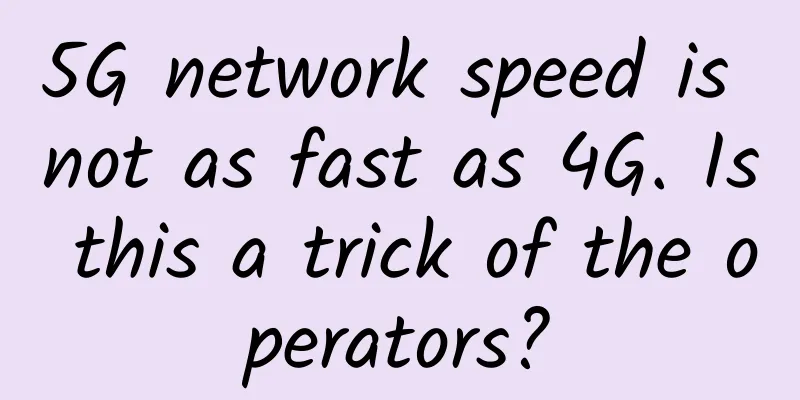In 2020, who will break out in the 5G era?

|
In June 2019, the Ministry of Industry and Information Technology issued 5G commercial licenses to China Mobile, China Unicom, China Telecom and China Broadcasting Corporation, heralding the official start of the first year of 5G commercialization. At the end of October of the same year, operators announced the official commercialization of 5G, with the first batch launched in 50 cities. In 2020, 3.4 trillion yuan was invested in new infrastructure, led by the four major operators and supported by technologies such as Huawei and ZTE, which has driven the joint development of the entire 5G communication industry chain. According to a research report by the US Wireless Communications and Internet Association (CTIA), China's 5G as a whole has taken the lead in the world. Who will be able to successfully catch the 5G express in 2020? 1. 5G mobile phones and mobile communications 5G is the latest generation of cellular mobile communication technology. Compared with 4G, its performance goals are higher data rate, less latency, energy saving, cost reduction, increased system capacity and large-scale device links. Mobile phones are the first products to adapt to 5G. On February 21, 2019, the Samsung Galaxy S10 5G version was released, becoming the world's first commercial 5G mobile phone. It is equipped with a Qualcomm Snapdragon 855 processor and an external baseband Snapdragon X50 to support 5G networks, sub-6GHz and 28/39GHz millimeter wave frequency bands, with a starting price of 8,893 yuan. Subsequently, global mobile phone manufacturers continued to increase their investment, and 5G mobile phones became a battleground. In May 2019, Xiaomi, a domestic mobile phone manufacturer, launched its first 5G mobile phone, the Xiaomi Mi MIX 3 5G version, equipped with a Snapdragon 855 processor and a Snapdragon X50 5G baseband, with a starting price of 4,560 yuan. Later, in July of the same year, Huawei launched its first 5G mobile phone, the Mate 20 X 5G version, with a starting price of 6,199 yuan. As the big brother in the mobile phone industry, Apple only launched its first 5G mobile phone, the iPhone 12 series, in October 2020. Figure | 5G mobile phone price comparison It can be seen that when 5G mobile phones were first released by major mobile phone manufacturers in 2019, the prices were all over 3,000 yuan, which was much higher than the prices of 4G mobile phones. Take ZTE Axon 10 Pro 5G version as an example. When it was released, the 6GB+128GB version was priced at 4,999 yuan, while the 4G version with the same memory was only 2,999 yuan. In 2020, the price of 5G mobile phones began to plummet, even entering the era of thousand-yuan phones. Take OPPO A5 as an example, the price of its 4GB+128GB version is only 1,299 yuan. According to the mobile phone shipment data released by the China Academy of Information and Communications Technology, in the first ten months of 2020, the total shipments of the domestic mobile phone market reached 252 million units, of which 5G mobile phones had a cumulative shipment of 124 million units, accounting for 49.4%, close to half of the total shipments. From a global perspective, according to the smartphone shipment market share and growth report for the third quarter of 2020 released by Counterpoint, global 5G mobile phone shipments also continued to grow, and China's overall shipments ranked first. Ranked by brand shipments, Samsung ranked first, Huawei ranked second, and Xiaomi ranked third. 2. 5G opens the era of the Internet of Everything The mobile phone is just an entrance, and with the arrival of 5G, the number of connections between things will increase significantly, and the era of the Internet of Everything is about to begin. He Gang, president of Huawei's mobile phone business, once pointed out that smartphones will become the hub and "key" to connect the world, and the future will be a "fully connected" world. From the perspective of application scenarios, the development of 5G is first felt by C-end users. According to data released by the three major operators, as of August this year, the number of 5G users has exceeded 150 million. In addition to the faster and smoother mobile phone experience, another intuitive feeling for C-end users is the hot live video experience. 2020 can be called the first year of live streaming for all. Although there were already live streaming players as early as 2005, live streaming has quickly entered all walks of life under the catalysis of the epidemic. For example, when the epidemic broke out, "cloud consultation", "cloud supervision", and telemedicine made everyone feel the importance of 5G; for another example, the live streaming anchors led by Li Jiaqi and Wei Yaba, the deposit transaction amount on the first night of Double Eleven alone exceeded 1 billion, which is comparable to the annual revenue of a company in the past. In addition, live teaching, cloud office, 5G Spring Festival Gala, 5G Winter Olympics live broadcast, etc., have rapidly accelerated the implementation of 5G in related scenarios. At the same time, with the increasing popularity of 4K/8K video and the continuous optimization of virtual reality technology, ultra-high-definition video live broadcast and 5G+AI+VR live broadcast will become mainstream under 5G networks. In addition to C-end scenarios, IoT scenarios will also occupy the largest share of 5G development, including toB scenarios such as industrial Internet and Internet of Vehicles, as well as toG scenarios such as smart cities, smart water services, and smart power grids. In addition, consumption, Internet, medical care and other aspects also enjoy the dividends of 5G, realizing integrated development in the 5G era. Yang Jie, Chairman of China Mobile, said that 5G will become a new cornerstone for building a digital society. The combination of 5G and technologies such as artificial intelligence, the Internet of Things, cloud computing, big data, and edge computing will give full play to the multiplier effect and build a new generation of ubiquitous intelligent infrastructure that integrates transmission, computing, and perception. The new infrastructure with 5G+AICDE as the core will also become a key facility and innovative application to support social and economic development in the new round of technological revolution. Picture | From the Internet 3. New infrastructure, building the cornerstone of 5G network 5G is the new cornerstone for building a digital society, and new infrastructure is the new cornerstone for building 5G networks. "New infrastructure" refers to new infrastructure represented by 5G, artificial intelligence, industrial Internet, etc. In 2008, new infrastructure was first proposed. At the beginning of this year, the country added 34 trillion yuan to new infrastructure and proposed to "accelerate the construction of new infrastructure such as 5G networks and data centers." Since then, China has moved from the information age to the digital age. Just recently, Liu Liehong, Vice Minister of the Ministry of Industry and Information Technology, revealed that my country has built the world's largest 5G network, with a total of 718,000 5G base stations built and 330,000 5G base stations jointly built and shared, far ahead of foreign countries. "From a technical point of view, 5G is the foundation for other digital economic infrastructure and applications such as artificial intelligence and industrial Internet; from an economic point of view, 5G can directly drive large-scale growth in information consumption and will have a huge impact on the industrial structure and economic form. Therefore, no matter from which perspective, modern information and communication networks represented by 5G are important carriers of the digital economy and the most fundamental infrastructure." Sun Songlin, professor at the School of Information and Communication Engineering of Beijing University of Posts and Telecommunications, once said in an interview. Conclusion 5G network will become one of the most important infrastructures in the future. According to the "2020 5G Communication Industry Innovation and Investment Trends" jointly released by CCID Consulting and Xinhuanet, China's 5G communication industry will usher in explosive growth from 2020 to 2025. It is estimated that in 2025, the scale of China's 5G communication market will reach 3.8 trillion yuan. With the development of 5G technology, the improvement of new infrastructure construction, and the joint efforts of equipment, operations and terminals, an era of the Internet of Everything is coming... |
<<: Will the next 5G data package be an “unlimited data package”?
Recommend
Riverbed China Survey: There is a huge gap between digital vision and digital performance
[Beijing, July 3, 2018] Digital performance compa...
Cloud Gateway for Home Computing Networks
Author: Tian Yang, Unit: China Mobile Smart Home ...
Edge computing workloads: VMs, containers, or bare metal?
We live in an age of connected and smart devices....
Network Slicing: A Booster for 5G
Preface I have recently become interested in 5G n...
The Ministry of Industry and Information Technology has made it clear that the SA function will be turned on by default for new 5G mobile phones
5G mobile phones are divided into NSA and SA dual...
What is the relationship between the Internet of Things and the Internet, when will the explosion occur and what are their uses?
Name Explanation The Internet of Things is an imp...
LoRaWAN will temporarily replace 5G networks for IoT
5G networks are set to revolutionize the Internet...
T-Mobile plans to provide super-capacity 5G network within three years
According to foreign media reports, T-Mobile plan...
Facing the high pressure of price war, how will Yunfan Accelerator choose to break through?
[51CTO.com original article] What kind of CDN ven...
ProfitServer has opened 4 new data centers in Hong Kong, starting from $5.77 per month for 100M unlimited traffic
ProfitServer sent a new email a few days ago, say...
The battle of data center network switching equipment architecture
Switching technology is one of the important tech...
Millimeter wave is imperative to unleash the full potential of 5G!
As my country's 5G network construction scale...
In-depth understanding of classic load balancing cases
Preface I have nothing to do so I write an articl...
What exactly is semantic communication?
As we all know, since the outbreak of the informa...
Kai-Fu Lee: Under what conditions will artificial intelligence surpass humans?
[51CTO.com original article] In recent years, art...

![[6.18] OneTechCloud: VPS 30% off monthly payment starting from 19 yuan, Hong Kong CN2/CMI large bandwidth/US CN2 GIA/high defense optional](/upload/images/67cabe9645d50.webp)







